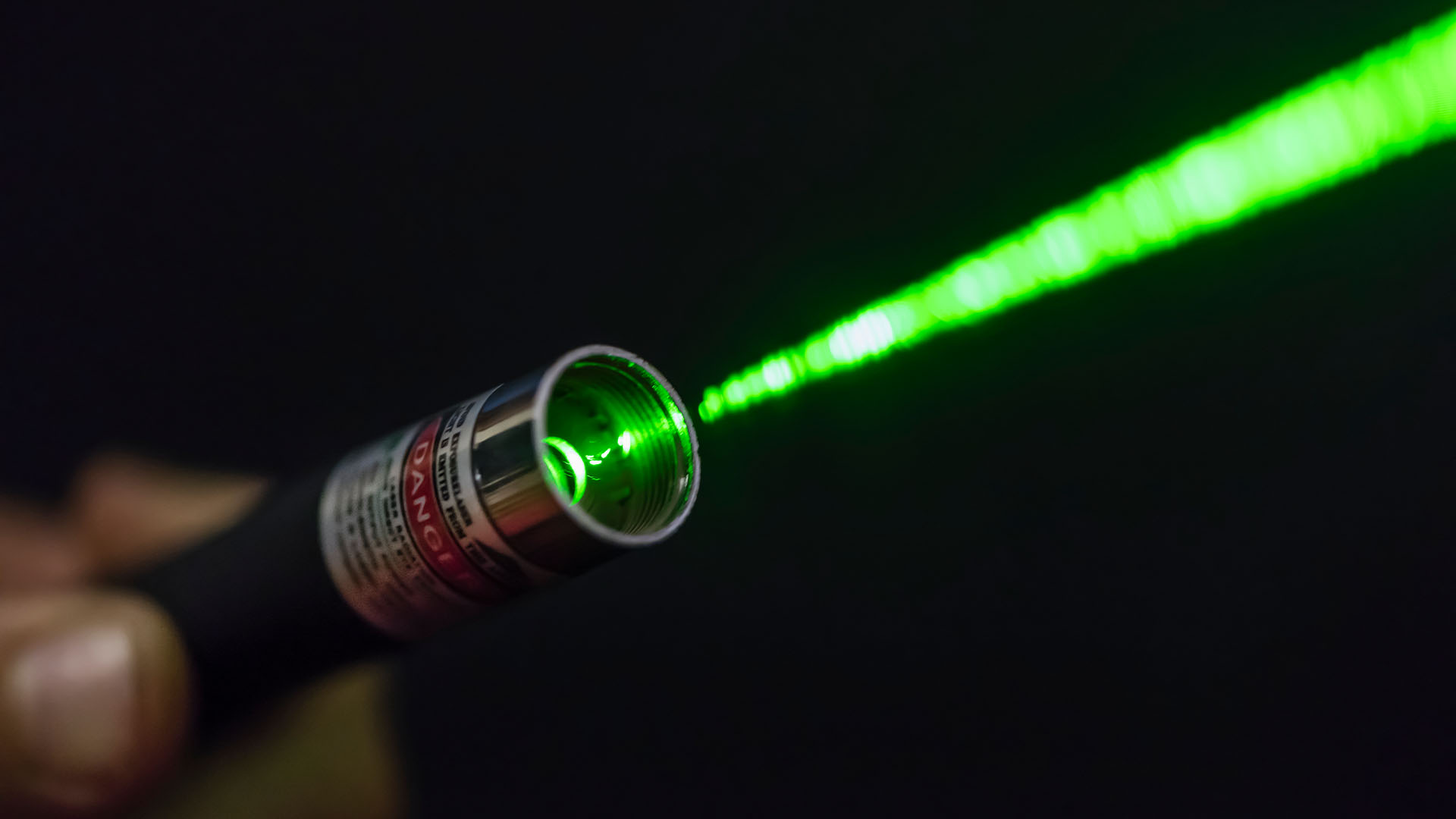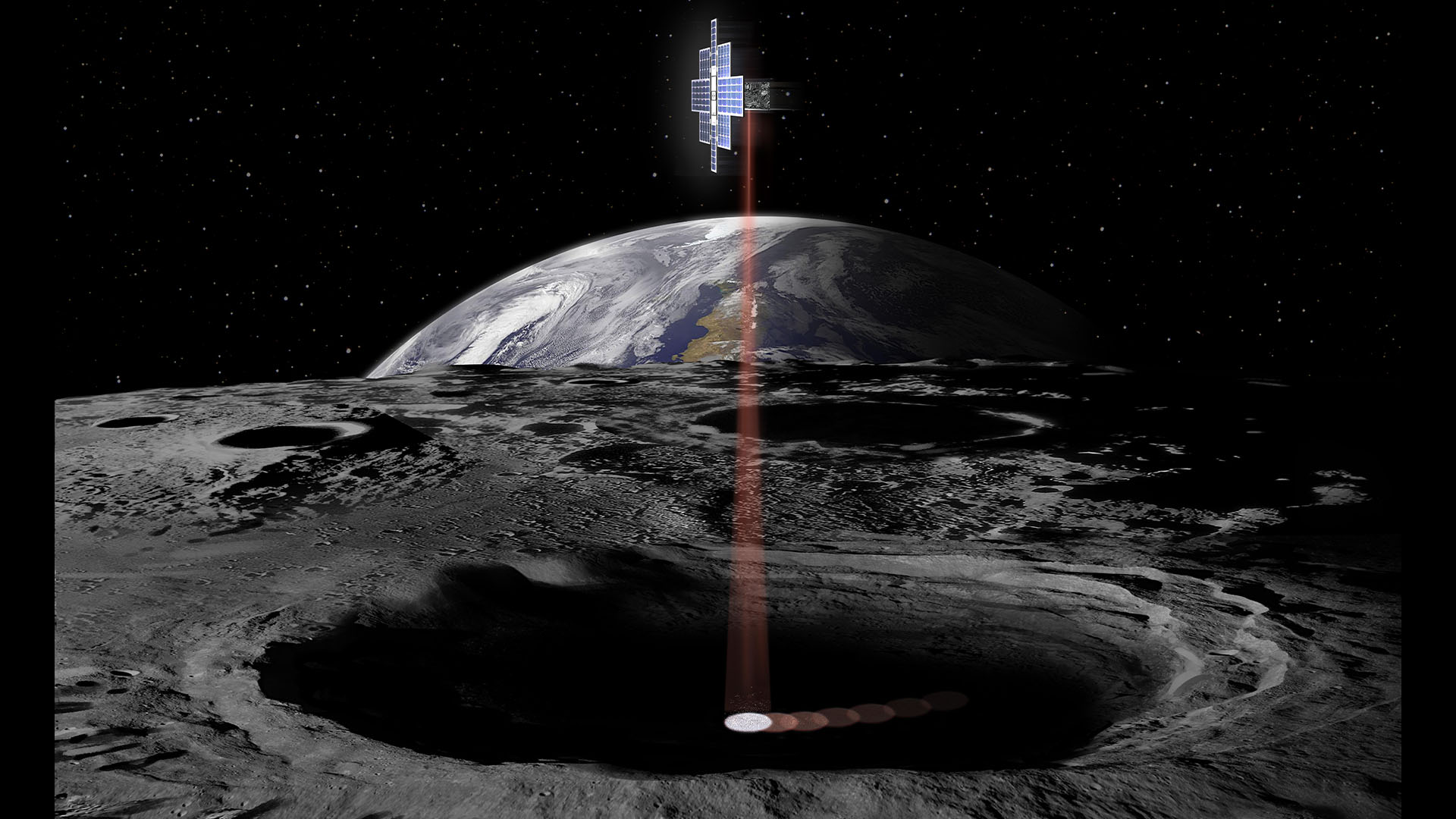
They're in grocery store scanners, internet connections and car backup cameras. Whether you realize it or not, you interact with lasers every day. This light-based technology has helped build the modern, deeply interconnected world we live in. But what, exactly, are lasers, and how do they work?
The word "laser" is actually an acronym; it stands for "light amplification by sustained emission of radiation." Lasers work by making energetic particles vibrate, or "oscillate," in sync, meaning the peaks and troughs of light waves they emit all line up. Think of an army marching in formation compared with a crowd of people milling around a town square, said Peter Delfyett, a photonics engineer at the University of Central Florida. "That is sort of the quality of laser light versus the incoherent white light we're typically used to."
When the electrons in vibrationally synchronized atoms reach their highest-energy state, they suddenly fall back to a low-energy state in unison, emitting a special form of light in the process. A laser device then refines this light by bouncing it back and forth between two mirrors before putting it to use.
Related: Inside the 20-year quest to unravel the bizarre realm of 'quantum superchemistry'
"That's the actual light you see coming out of your laser pointer," Delfyett said.
The fundamental physics behind laser technology have been known for more than a century; the theory was first proposed by Albert Einstein in 1917. But it would take researchers nearly four decades to bring these theoretical ideas to life.
Before lasers, there were masers — a similar technology that uses microwaves instead of visible light. The first functional maser was built in 1954 by a group of scientists at Columbia University. This device used a beam of high-energy ammonia molecules and a hollow enclosure called a resonance cavity to force microwaves to oscillate together. However, its power output was tiny — only about 10 nanowatts. That's more than a billion-times less than the amount needed to turn on a typical light bulb. The world's most powerful lasers, in contrast, can produce up to 10 petawatts — about a tenth of the power of the sun.

To make a more powerful maser, scientists started looking at different frequencies in the electromagnetic spectrum. In 1960, the "optical maser" — better known as the laser — was born. Not all lasers operate in the visible light spectrum, but they all use frequencies above microwave radiation.
Lasers have a couple of advantages over masers. In addition to packing more energy into their beams due to their shorter electromagnetic wavelengths, lasers are easier to build and easier to control precisely. While masers are still sometimes used for things like radio telescopes and deep-space communications, lasers are far more common today.
"The laser is one of the most important scientific and technological inventions of the 20th century," said Svetlana Lukishova, a nano-optics researcher at the University of Rochester in New York. Lasers are now used in everything from eye surgery to etching glass to the fiber-optic cables that enable global internet connection. They've even been instrumental in detecting ripples in space-time known as gravitational waves; the Laser Interferometer Gravitational-Wave Observatory uses two massive lasers placed thousands of miles apart to probe the very fabric of space-time.
The future of laser technology looks equally bright. Some researchers are exploring its potential for imaging exoplanets far beyond our solar system. And Delfyett and his lab are working on a project to miniaturize lasers to make data centers smaller and much more energy efficient, thereby reducing greenhouse gas emissions.
But Delfyett believes the technology may have applications we haven't even dreamed of yet. "The use of lasers is only limited by your own imagination," he said.







